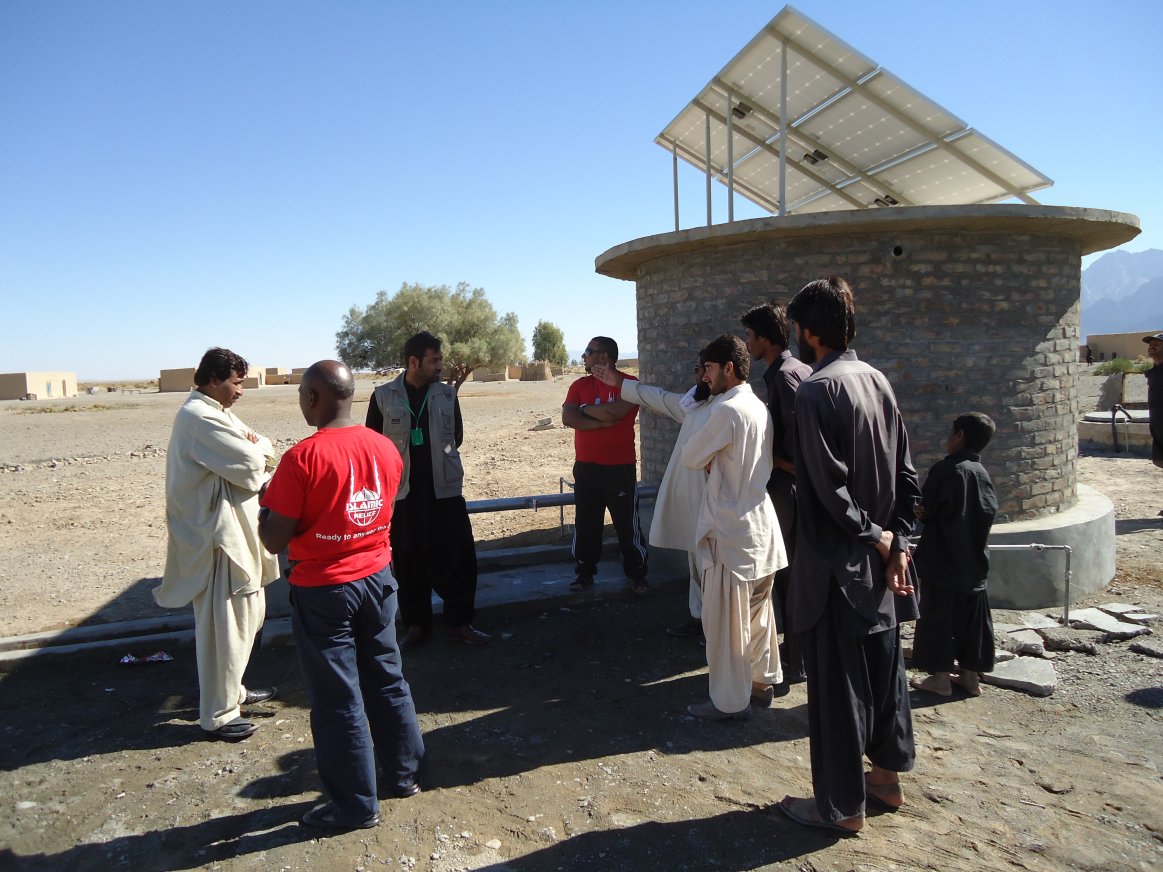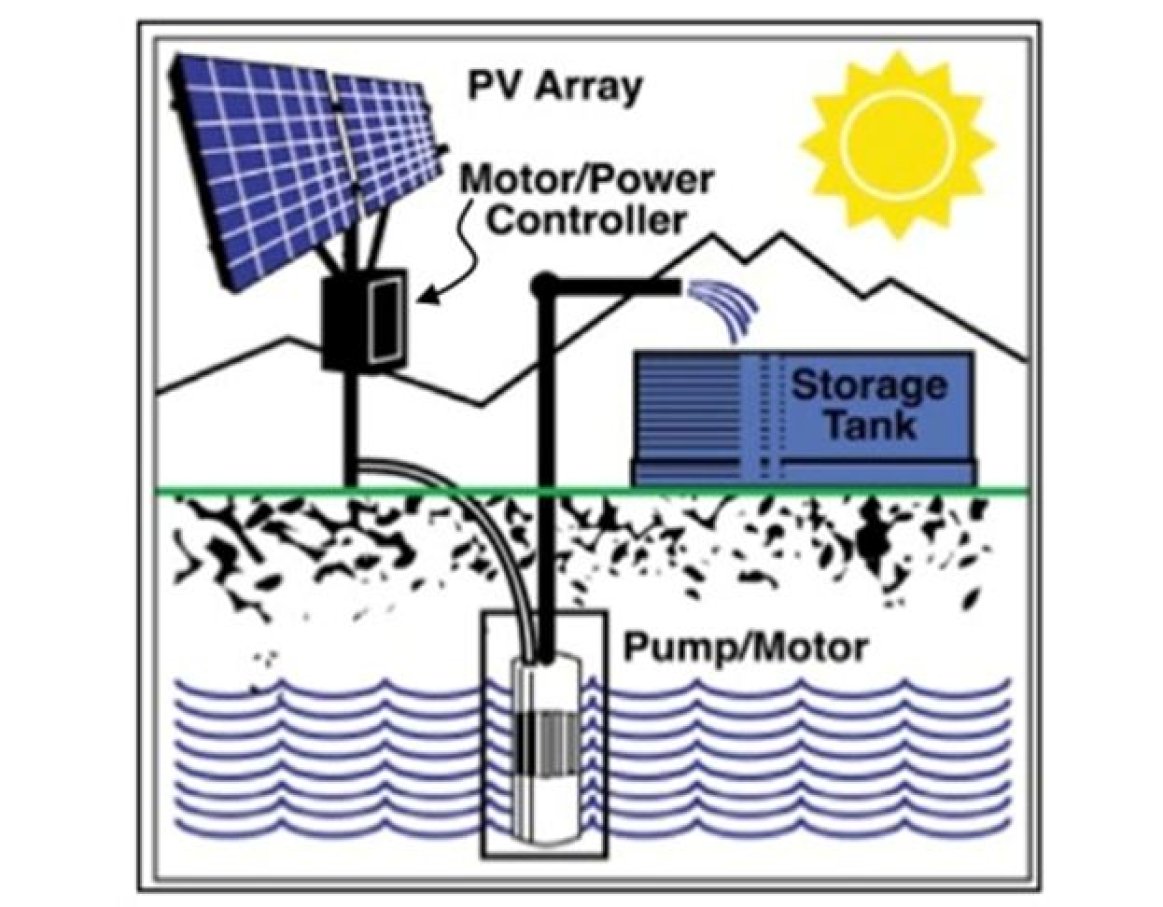

Any renewable energy source can make the electricity needed to power various appliances, including pumps. Solar electric power in particular is a reliable and economic choice for powering remote water pumping. Solar water pumping systems are in common use for garden fountains, livestock watering, and large-scale watering needs for commercial installations.
Cattle ranchers all over the world are enthusiastic solar pump users because their water sources may be spread over large areas of rangeland that lack utility power and where generator use would be expensive and impractical. Photovoltaic (PV) panels are therefore in widespread use for reliably producing electricity directly from sunlight to power livestock and irrigation watering systems. When properly designed, PV-powered pumping systems can result in significant long-term cost savings and a smaller environmental footprint compared to conventional power systems.
System Design Considerations
A typical solar-powered water pump system, which includes a solar array, controller, pump, and storage tank. (Source: “The Montana Agsolar Project – Expanding the Agricultural Uses of Solar Energy in Montana.”)
A solar-powered water pumping system consists of four parts: the actual pump which moves the water, the controller which adjusts the pump speed and output power as the solar panel input varies, the engine, and the solar panels. The specifics of the system design are determined by the following considerations:
- The site-specific available solar energy (or insolation).
- The volume of water required in a given period of time for the application at hand. This may include additional water to be stored for periods when the PV is not operating or has diminished output.
- The total dynamic head (TDH) for the pump (the equivalent height that water must be raised, taking friction losses in the pipes into account.)
- The quantity and quality of available water.
- The system’s proposed layout and hydraulic criteria.
Pumps for Solar Pumping Systems
There are two major types of solar pumps, direct current (DC) and alternating current (AC). DC solar pumps are generally suitable for small applications (garden fountains, landscaping, etc.) and are relatively low-priced, particularly because they do not require inverters to produce AC power from the solar panels. These pumps are generally designed to operate with minimum electrical power, so they have rather low flow rates. Such pumps often find use in submersible deep wells where a slow but steady pump rate is acceptable.
AC solar pumps are driven by inverters producing AC power from PV panels. They are suitable for all kinds of applications from landscaping to irrigation, particularly large-scale applications such as farmland irrigation, desert control, and so forth. AC solar pumps are available in power output ranges from 150W to 55kW.
Solar-powered pumps are characterized as either positive displacement pumps (e.g. diaphragm, piston, or helical rotor) or centrifugal pumps. Positive displacement pumps are typically used when the TDH is high and the flow rate (measured in gallons per minute) required is low. Conversely, centrifugal pumps are typically used for low TDH and high flow rates.
There are many resources available that provide specific information and advice for implementing solar water pumps in a variety of situations. These should be consulted to meet the needs of specific applications.
Resources
- Graphic guide to solar water pumping
- Design of Small Photovoltaic (PV) Solar-Powered Water Pump Systems
- Determining the Optimum Solar Water Pumping System for Domestic Use, Livestock Watering or Irrigation
Comments
Some of the key findings are:
- Ninety percent of all electricity used on farms is devoted to pumping groundwater for irrigation.
- The California State Water Project is the largest single user of energy in California. In the process of delivering water from the San Francisco Bay-Delta to Southern California, the project uses 2 to 3 percent of all electricity consumed in the state.
- The State Water Project burns energy pumping water 2,000 feet over the Tehachapi Mountains—the highest lift of any water system in the world. The amount of energy used to deliver that water to residential customers in Southern California is equivalent to approximately one-third of the total average household electric use in the region.
For more information, you might want to take the time to read the attached report from NRDC.Energy Down the Drain
Solar power can be used for a safe list of things and they are finding that pumping water is the next thing that they can promote the technology with.